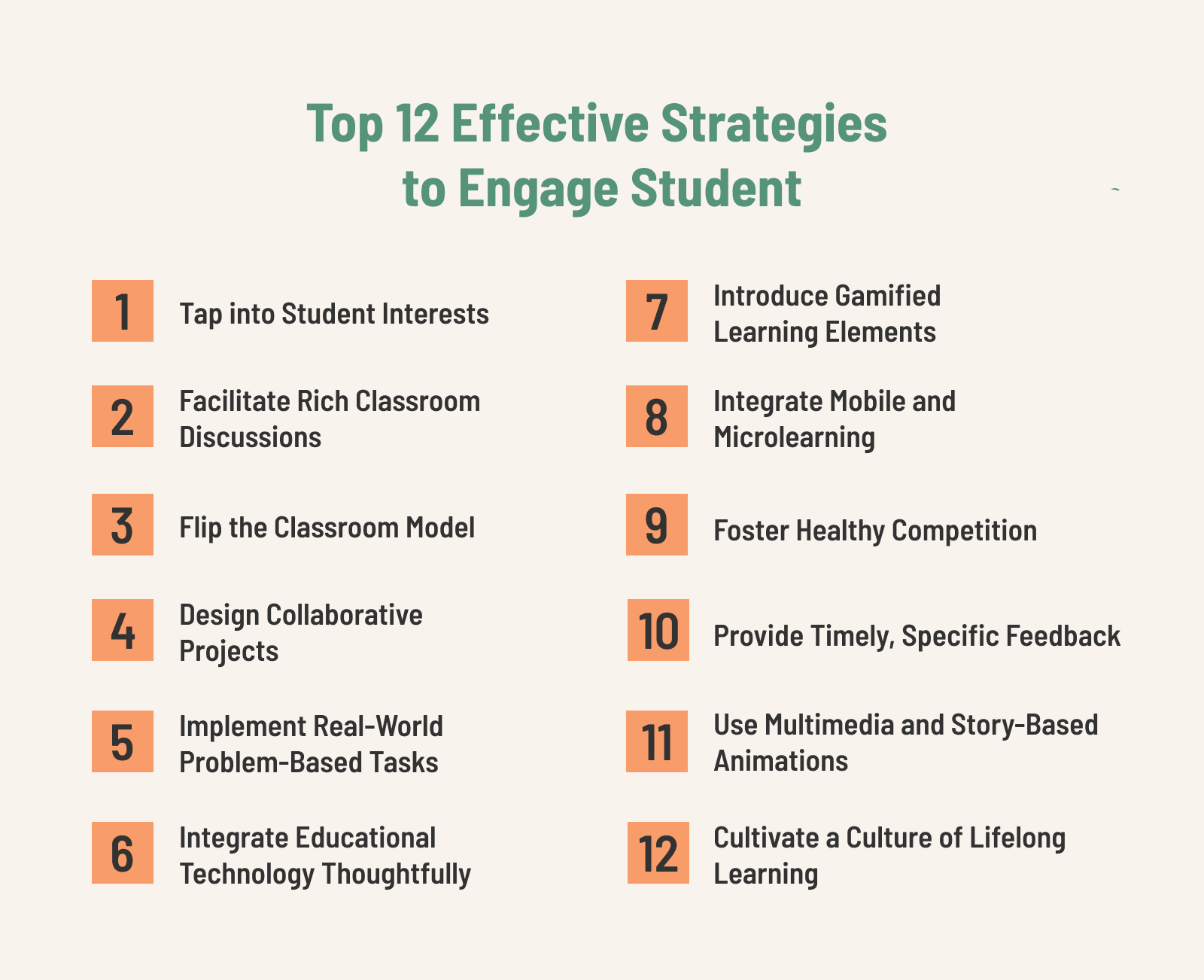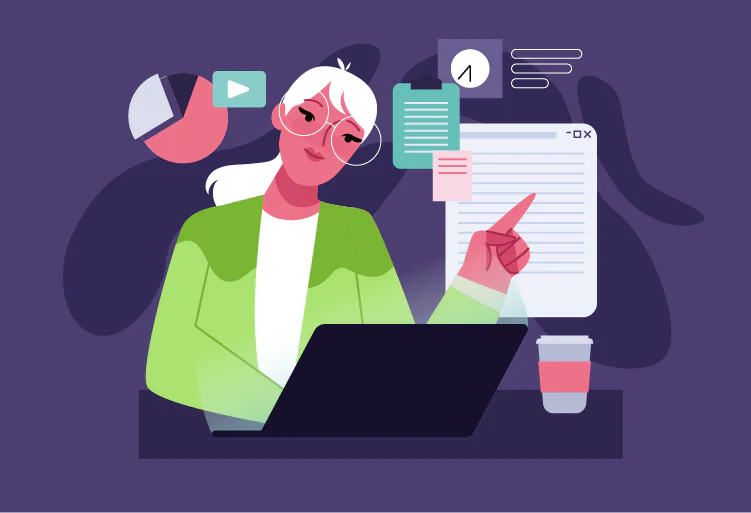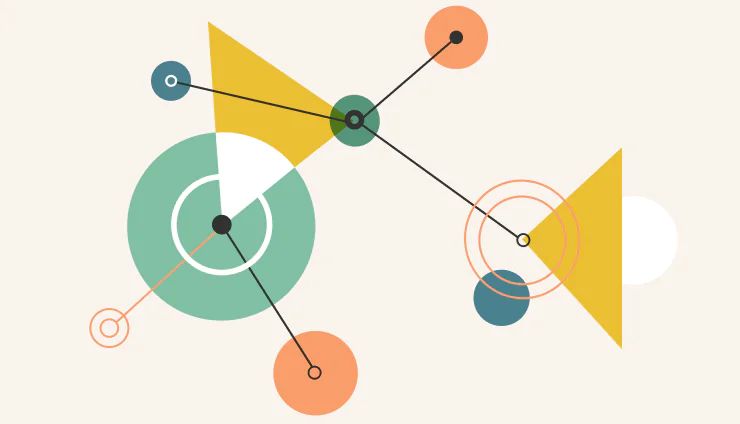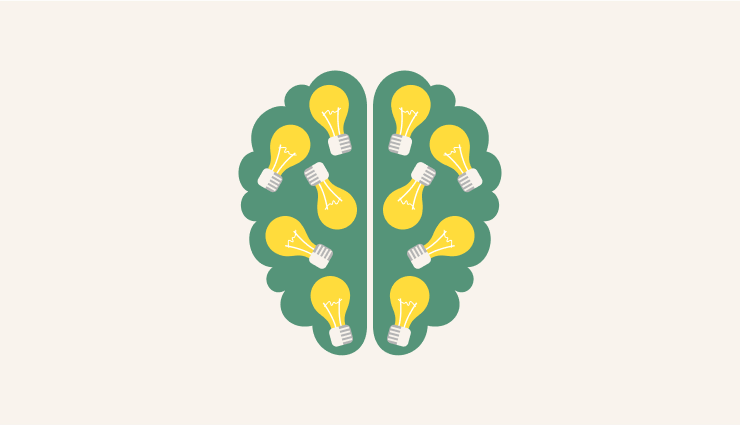A steady stream of notifications and competing interests can pull attention away faster than any lecture can hold it. Effective student engagement strategies must move beyond one-off gimmicks. Students respond best to genuine connections, curiosity, and a sense of ownership over their work. Focus on how to engage students in learning through meaningful interaction, relevant activities, and learner choice. This turns classrooms into active hubs where critical thinking and confidence flourish. From this article, you’ll learn how to build and manage student engagement strategies.
There was a time when veteran educators advised new teachers to “hold your smile until Christmas,” suggesting that a stern stance was the surest way to command respect. Today, we’ve learned that building genuine connections and fostering positive learning environments are far more effective for how to engage students in learning.
Barkley and Major (2020) describe engagement as the interplay between motivation, what drives a learner, and active learning, what hands-on tasks that build their skills. This combination varies by individual and even by class: a survey found that 71 percent of students often complete all assignments and 60 percent ask or answer questions in class, yet 83 percent still report being “sometimes or often bored” when lessons don’t resonate.
To boost student motivation, focus on relevant content. Provide opportunities for small-group discussions or written reflections, particularly for those hesitant to interrupt authority figures. Also, use classroom participation techniques that make speaking up safe and rewarding. This should be combined with a student-centered instructional approach.
Technology and teacher practices also play measurable roles. An EdWeek survey shows 76 percent of students find lessons more engaging when tech is integrated, and a meta-analysis of 43 studies confirms that digital learning games in math improve both cognitive and behavioral outcomes.
A 2022–2023 study by GoGuardian and USC found that 96.9 percent of K–12 teachers regularly use relationship-building, caring, and ed-tech strategies to boost student engagement: Effective teaching methods and tools like interactive LMS modules, gamified quizzes, real-time feedback, and peer collaboration show that when lessons feel relevant and hands-on, engaging learning activities metrics rise.
“Engagement is the secret key to learning. When students actively engage or participate to pursue knowledge, they are actually preparing for themselves a better life ahead.” — Tom Dewing, Ho Ho Kus Associate and consultant for Silver Strong.
Challenges in Adopting Student Engagement Strategies
Why are we competent to tell about student engagement issues and solutions? Because we’ve worked side by side with the University of California, Los Angeles, where adaptive learning drove median exam scores from 53% to 80%, and cut course attrition from 44% to 14%.
Digital Distractions and Short Attention Spans
In a typical classroom session, students juggle a steady stream of notifications and social media updates: 97 percent of 11- to 17-year-olds report using their smartphones during the school day, averaging 43 minutes of in-school screen time and 51 pickups per day, many of which occur during lessons.
Roughly two-thirds of U.S. students say digital devices distract them in class, and 54 percent admit they lose focus when peers check their phones. Teachers confirm the impact: 72 percent report cellphone distractions as a major problem in their classrooms, often undermining even the most effective teaching methods.
Pervasive interruptions make increasing student motivation a steep climb. Without active, interactive approaches, the lure of notifications can easily pull learners away. This widens the gap between teacher intentions and student focus.
Diverse Learning Needs and Styles
Every classroom mixes unique backgrounds, learning preferences, and skill levels. Some students thrive on visual aids, while others prefer hands-on experiments; some excel in group discussions, and others process information best in solitude. Educators who cannot adapt their student engagement strategies to this spectrum miss the opportunity to tap into every learner’s potential.
Failing to address these differences with engaging learning activities means certain students disengage, whether they feel bored because the material is too simple or overwhelmed when it’s too advanced. Thoughtful classroom participation techniques must include multiple entry points for learning, ensuring that no one is left behind.
Perceived Irrelevance of Content
When students fail to see how lessons connect to their lives or future goals, motivation plummets. A math formula, historical date, or scientific concept can feel like busywork unless it’s rooted in a real-world application.
Without explicitly explaining why a topic matters, such as how statistics underpin sports analytics or how physics principles drive gaming technologies, students question the relevance of the effort. This disconnect leads to apathy, as learners remain passive consumers rather than active participants in their learning.
“By weaving in project-based collaborative learning tasks or tossing in real career scenarios, you give students a reason to care, making lessons feel less like chores and more like stepping stones to something they want to do.” — Raccoon Gang’s EdTech Engineer
Large Class Sizes and Limited Personal Interaction
In overcrowded classrooms, one teacher may struggle to build meaningful relationships with every student. Limited individual attention can leave some learners feeling unseen and reluctant to participate. When students believe their questions or contributions won’t receive genuine feedback, they hold back, reinforcing disengagement and ruining even the strongest student engagement strategies.
Additionally, managing a large group often forces teachers into lecturing mode, leaving little room for small-group work or personalized coaching. To counter this, educators need scalable classroom participation techniques, such as peer-led teams or rotating discussion roles, that foster connection even in a sea of faces.
Effective Strategies to Engage Students according to Raccoon Gang’s Experts
These approaches, rooted in active learning, collaborative learning, and interactive teaching techniques, provide a friendly guide for educators who want their classrooms to buzz with curiosity, connection, and excitement, promoting student involvement. By weaving in relevance, technology, and genuine human connection, you’ll notice that student motivation rises, participation deepens, and learning becomes an adventure rather than a chore.
Tap into Student Interests
When you discover what genuinely fascinates a learner, whether it’s a playlist, a local sports team, or a creative hobby, you can build active learning assignments around those passions. Invite students to create presentations, write reflections, or craft projects that link class concepts to real-world interests.
“The most important single factor influencing learning is what the learner already knows.” – David Ausubel, educational psychologist.
This makes lessons feel personally relevant and shows students you’re invested in what matters to them, boosting collaborative learning engagement and ownership of learning.
Facilitate Rich Classroom Discussions
Turn your classroom into a conversation hub instead of a lecture hall. Begin with a thought-provoking question, then have students swap ideas in small groups before sharing their thoughts with the entire class. Giving everyone a moment to think before responding encourages quieter students to join in. These interactive teaching techniques sharpen critical thinking, build confidence, and foster a true sense of community.
Flip the Classroom Model
Try flipping the script: have students explore new material at home, perhaps through a short video or engaging reading, and then use in-class time for hands-on problem solving, debates, or collaborative labs. This shift puts active learning front and center: students arrive ready to apply what they’ve learned, and you’re free to coach, clarify, and guide them through deeper understanding rather than lecturing from the board.
Design Collaborative Projects
Nothing fuels engagement like working toward a shared goal. By involving instructional design services to structure these activities, you can organize learners into small teams and assign tasks that require them to research, plan, and present together.
“When everyone has a clear role — researcher, document designer, or presenter — each student can pitch in in a way that actually matters. These collaborative learning moments aren’t just fun; they teach communication, empathy, and leadership. And when a team pulls off a win together, engagement just clicks.” — Raccoon Gang’s EdTech Engineer
Implement Real-World Problem-Based Tasks
Pose authentic challenges, like proposing a green solution for your school yard or designing a budget for a community event, that mirror problems professionals solve. These tasks show students exactly why their learning matters: math formulas become real budgets, scientific principles turn into hands-on experiments. When students see that their work can impact the world around them, engagement naturally climbs.
Integrate Educational Technology Thoughtfully
Technology can be a powerful engagement booster when chosen with purpose. Instead of flashy distractions, pick tools that promote interaction, using online course development services to add short quizzes into your LMS or integrate a digital whiteboard for brainstorming. Interactive simulations let students experiment safely, transforming abstract concepts into tangible experiences. When tech enhances exploration instead of replacing human connection, engagement thrives.
“The students, who get an access to modern online technology, like this learning pattern immensely. Similarly, many students including me now use modern technology as an ultimate tool to obtain students’ engagement in learning.” — David Harms, Instructor of Social Studies, Perrysburg.
Introduce Gamified Learning Elements
Tapping into natural curiosity, game-like mechanics, like earning points, unlocking badges, or climbing a leaderboard, can turn routine tasks into mini-adventures. Award a badge for nailing that chemistry equation or offer a challenge where teams race to solve a history puzzle. Make sure these proactive classroom participation techniques and games align with learning goals so students know they’re rewarded for genuine effort, not just points. When done right, gamification in education keeps motivation humming.
When a nationwide educational organization moved online in 2020, we created a gamified platform on Open edX with our RG gamification tool to boost engagement. In four months, 11 developers rolled out badges, challenges and leaderboards tied to lesson objectives. Learners raced through modules, got instant feedback via Telegram and tracked their progress on dashboards. The result: over 7,000 active users, 5,000 new sign-ups in three months and 80 percent of visits showing high engagement. This demonstrates how smart gamification can turn learning into an adventure.
Integrate Mobile and Microlearning
Students today live on their phones, so offer bite-sized lessons they can access in short bursts, perhaps a quick video or a 3-question quiz. These microlearning tools and modules fit into spare moments between classes and prevent cognitive overload. Over time, this approach supports steady progress and respects how modern learners prefer to absorb new information via up-to-date classroom participation techniques.
For instance, when Axim Collaborative needed learners to access bite-sized modules on the go, we involved Open edX® services to build a custom mobile app that lets students watch short videos or answer quick quizzes anywhere — even offline. Push notifications remind them to finish a three-question challenge during breaks, and progress bars show their daily microlearning streak. This mobile app makes it easy to sneak in learning between errands or before practice, proving that well-designed lessons delivered via user-friendly custom collaborative learning mobile apps keep engagement steady and respect how modern learners prefer to learn.
Foster Healthy Competition
A bit of friendly rivalry can spark big engagement and improve learner motivation. Set up debate brackets, timed coding sprints, or collaborative quiz tournaments. Structure these activities so that success depends not only on speed but also on teamwork and creativity. When students know their classmates rely on them and that effort matters most, they invest more energy and stay engaged.
Provide Timely, Specific Feedback
Waiting weeks to return an assignment kills momentum. Instead, offer feedback quickly (within days) and highlight what the student did well before suggesting improvements. Record a short audio comment or send a quick note to point out strengths and next steps. When students see exactly how to grow, they remain motivated and view learning as an ongoing process, not a final verdict.
Use Multimedia and Story-Based Animations
A compelling narrative can capture attention like nothing else. Create short animations or case stories that place content in vivid, relatable contexts, whether you’re illustrating a social studies event or a scientific principle. Multimedia elements appeal to various learning styles, making lessons more memorable. When students connect emotionally to a story, engagement endures long after they close their notebooks.
Cultivate a Culture of Lifelong Learning
Encourage students to see learning as a lifelong adventure, not just a classroom requirement. Share examples of professionals who continuously upskill. Celebrate personal milestones, like mastering a challenging coding technique. Invite guest speakers who embody a growth mindset. By modeling curiosity and offering pathways for ongoing exploration, you ignite a spark that keeps learners engaged well beyond your classroom walls.
How to Measure Student Engagement
Measuring student engagement isn’t just about logins or quiz scores. It’s about spotting signs of curiosity, collaboration, and confidence — especially in online settings. Tools like heatmaps, clickstream data, and forum sentiment analysis reveal patterns that basic attendance reports overlook.
Custom LMS features can highlight who’s disengaged and what content drives interest. Tools like automated prompts or participation dashboards help spot inactive learners early. With real-time analytics and feedback, schools can boost student involvement and improve class dynamics, both online and in-person.
The major steps for measuring student engagement:
- Embed short pulse surveys (2–3 questions) at critical course milestones to gauge real-time interest and self-reported focus.
- Use time-on-task metrics in your LMS to compare how long learners spend on interactive modules versus passive readings.
- Analyze discussion forum contributions and sentiment scores to see who’s leading conversations and who might need a nudge.
- Track completion rates of optional enrichment content, like bonus videos or advanced exercises, to spot highly engaged learners.
- Monitor peer collaboration logs (e.g., shared document edits, group chat activity) as a proxy for teamwork and social learning.
- Implement automated alerts for students who haven’t logged in for a set number of days, then follow up with personalized reminders.
- Compare performance on low-stakes quizzes versus high-stakes assessments to identify shifts in confidence and sustained engagement.
- Create custom LMS dashboards that highlight drop-off points in lesson paths, so you can refine content before motivation wanes.
Harvard, Arizona State University and the University of Washington have all partnered with us to refine their continuing education offerings, using educational engagement tools to monitor alumni interaction with microlearning modules or live webinars. At one institution, introducing adaptive learning into a key course sent median exam scores climbing from 53% into the 72–80% range.
That same course saw its average attrition rate drop from 43.8% to 13.4%. Female students’ dropouts plummeted from 73.1% down to 7.4%. By analyzing collaboration logs in upskilling cohorts and engagement rates on professional development videos, these universities gain insights that fuel learner motivation. This supports fostering student interest and keeps enhancing classroom dynamics long after graduation.
The Final Word
Student engagement isn’t a mystery. It’s a mix of thoughtful structure, creative delivery, and listening to what learners respond to. Whether you’re testing new classroom participation techniques or refining your approach with more effective teaching methods, the small shifts matter. One discussion prompt, one real-world example, one moment of connection can make all the difference.
There’s no universal playbook for how to engage students in learning, but there are patterns that work. Try what fits, adapt what doesn’t, and measure what moves the needle. If you’re looking to deepen your impact with smarter learning tools or help design something custom, let’s talk. Raccoon Gang can help build what your learners actually need.
FAQ
What are effective strategies to engage students in learning?
How can technology enhance student engagement?
Why is student engagement important in education?
How can educators measure student engagement?
- Challenges in Adopting Student Engagement Strategies
-
Effective Strategies to Engage Students according to Raccoon Gang’s Experts
- Tap into Student Interests
- Facilitate Rich Classroom Discussions
- Flip the Classroom Model
- Design Collaborative Projects
- Implement Real-World Problem-Based Tasks
- Integrate Educational Technology Thoughtfully
- Introduce Gamified Learning Elements
- Integrate Mobile and Microlearning
- Foster Healthy Competition
- Provide Timely, Specific Feedback
- Use Multimedia and Story-Based Animations
- Cultivate a Culture of Lifelong Learning
- How to Measure Student Engagement
- The Final Word







